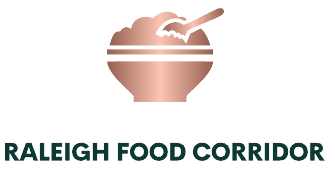All information on the recycling of aluminum
In recent years, aluminum has been widely used packaging for food, pharmaceutical and cosmetic products. It is found everywhere: cans, tins, coffee capsules, trays… But how and why is it recycled? It is better to recycle it rather than renting a dumpster and sending it to the nearest landfill.
What is aluminum
Aluminum is a shiny white metal that is 100% recyclable, recycled endlessly. It is a very affordable material since it offers perfect resistance for food preservation. As it is infinitely recyclable, its recycling poses no problem for natural resources or the environment. It is non-toxic and decomposes quickly after death.
In fact, recycling a single aluminum bin makes it possible to recycle almost 8 times more other packaging with less raw material and therefore less energy consumed.
Everyday objects where aluminum is found
Around us, many objects contain aluminum, we can cite in particular:
- Cans (drinks)
- Aluminum foil for food preservation
- Coffee pods
- Part in aeronautics
Aluminum recycling
Recycled aluminum offers a number of benefits to the planet, including reduced CO2 emissions and no risk of radioactive contamination. It is 100% recyclable which will allow less consumption in the future. If only 10% of global recycling would be recycled into recycled aluminum, it would be enough to abandon the use of aluminum to produce LED bulbs.
The stages of aluminum recycling
There are several very important steps so that recycled aluminum does not lose its properties. Indeed, depending on the recycling chosen and the transformation undergone by the aluminum before recycling, you should know that it can lose between 10 and 50%. The first step is to extract the recycled aluminum from the bin containing recyclable aluminum waste. There are several processes for this, including indirect or direct recycling, which will make it possible to avoid using new raw materials to recycle recycled aluminum.
A- Indirect recycling or electrolysis recycling: Aluminum, like copper, zinc and iron, have an unfortunate tendency to oxidize when they are in the presence of acidic brine which forms a protective film around it. To avoid this chemical reaction, the manufacture of recycled aluminum parts is done by indirect recycling where this film is used as a source for aluminum derivatives through electrolysis.
B- Direct recycling or recycling by melting: The recovered recycled aluminum is melted and reused for the manufacture of recyclable products.
Where can I recycle my aluminum?
Aluminum is one of the most valuable materials among recycled objects, because it cannot be created artificially. Therefore, it is important to be careful about where you take it. Here is a list of authorized collection points and drop-off points available to you:
- Recycling centers and sorting centers most often have a space dedicated to aluminum recycling (this is not always the case),
- Aluminum recovery companies also offer alternatives for bringing your used aluminum. Some even take care of packaging and delivery.
How to recycle zinc
All information on the recycling of iron and metals
What is zinc
Zinc is a chemical element, belonging to the group of transition metals. The chemical symbol for zinc is Zn and its ion notation is Zn2+. The exact name of zinc is based on its ancient Latin chemical symbol: zincum.
Zinc omnipresent in our daily lives
Everyday objects containing zinc are numerous, the most common being windows, defense grilles, pipes and various construction elements. During the manufacture of a door, for example, zinc is used for its insulating and waterproof quality.
What materials contain zinc
There are many materials that contain zinc in their composition – we can cite anodes for steel, metal construction elements such as water pipes, painted zinc, food metals such as cast iron for the manufacture of utensils. kitchenware or even aluminum and certain alloys which contain zinc.
Objects which contain zinc and which can be recycled:
- Key ring
- Pipeline
- Car bodywork
- Household appliances, for example microwave oven cooking tubes
- Screwdriver and screws with a zinc head
- Car, truck and household batteries
- Tinplate beverage cans and water bottles
Zinc recycling largely depends on the recovery rate of products containing zinc, more than 90% of these collected products are recycled.
How to recycle zinc
Recycling a zinc object is not an easy process: you must first remove the oxidation layer, which is deposited when the object is exposed to the air. Then, it must be cut up and recycled directly into galva or copper in the mass. We advise you to call a professional to recycle zinc objects.
Why call on an expert to recycle your zinc
Recycling your old zinc-containing product often requires specialist knowledge and know-how that you do not have. It is important to call on a professional to take care of this operation. You can find a recovery professional (household waste management or recycling) in your town or near you by consulting google maps and entering your address.
Warning: Do not throw your old product containing zinc in the trash! Even if you no longer use your product, do not throw it in the trash. As organic matter from large objects decomposes, it contributes to the methane production process in landfills. Recycle your old product instead of throwing it in the trash with specialized waste management services, so that you improve North Carolina sustainability.
